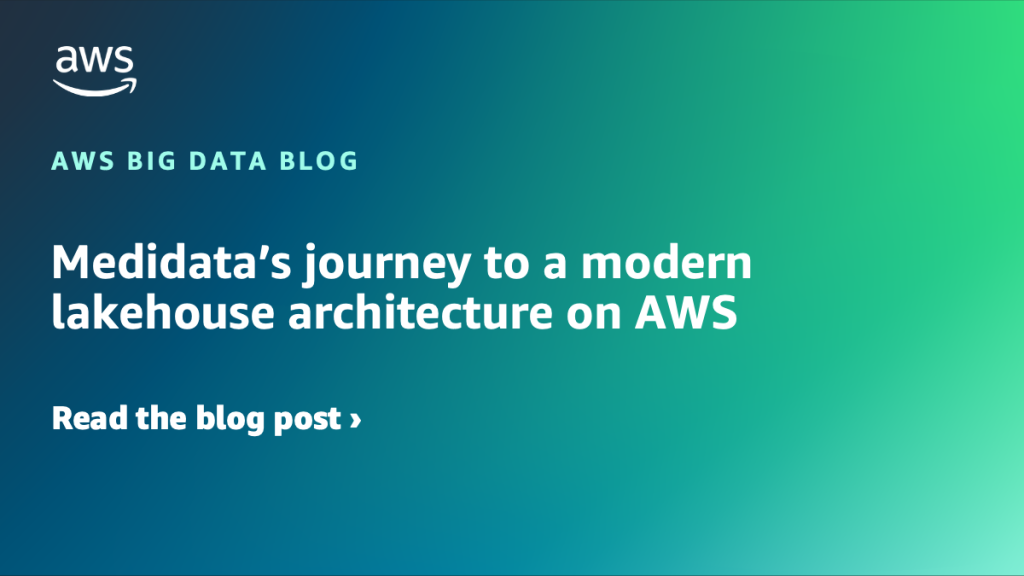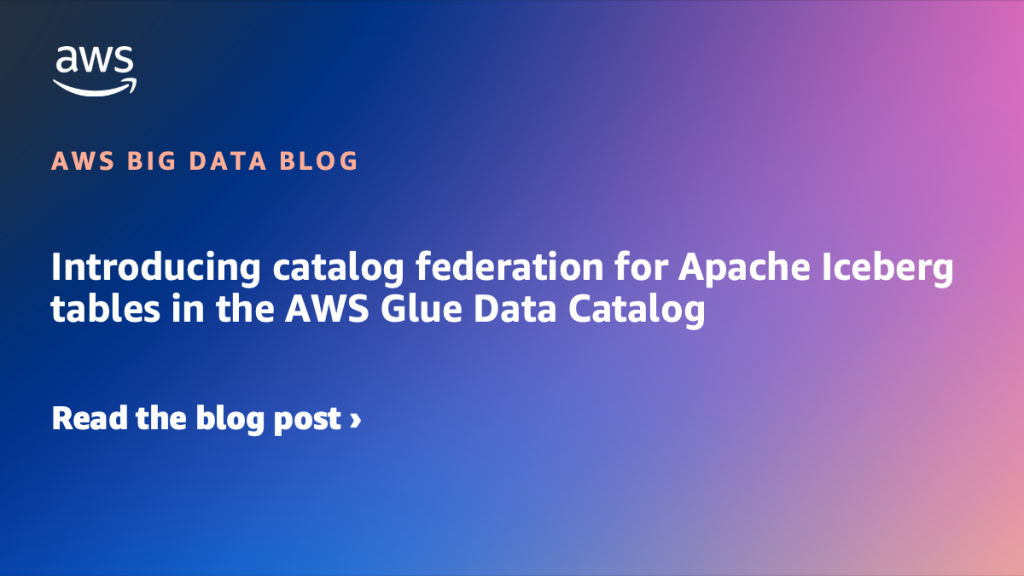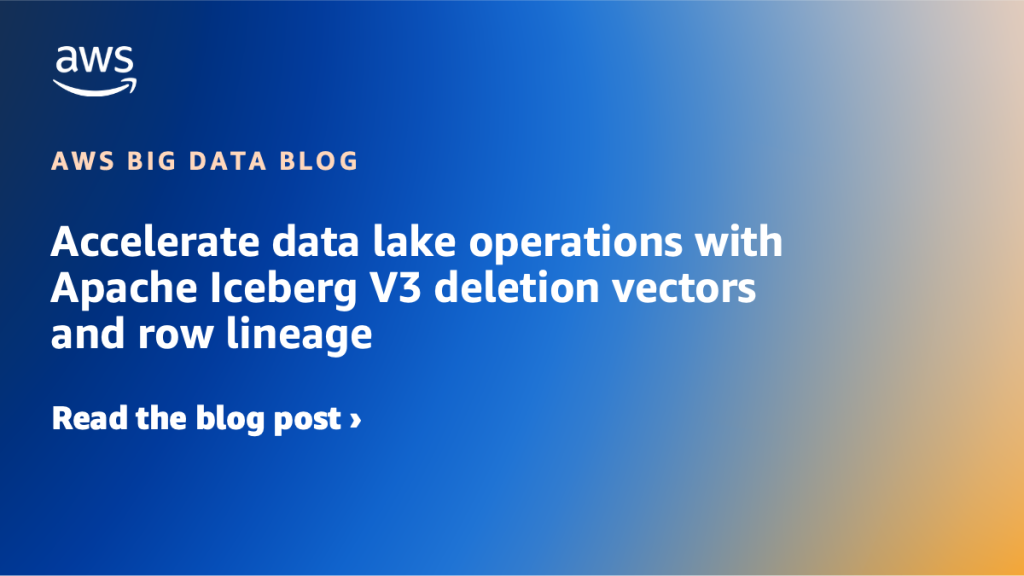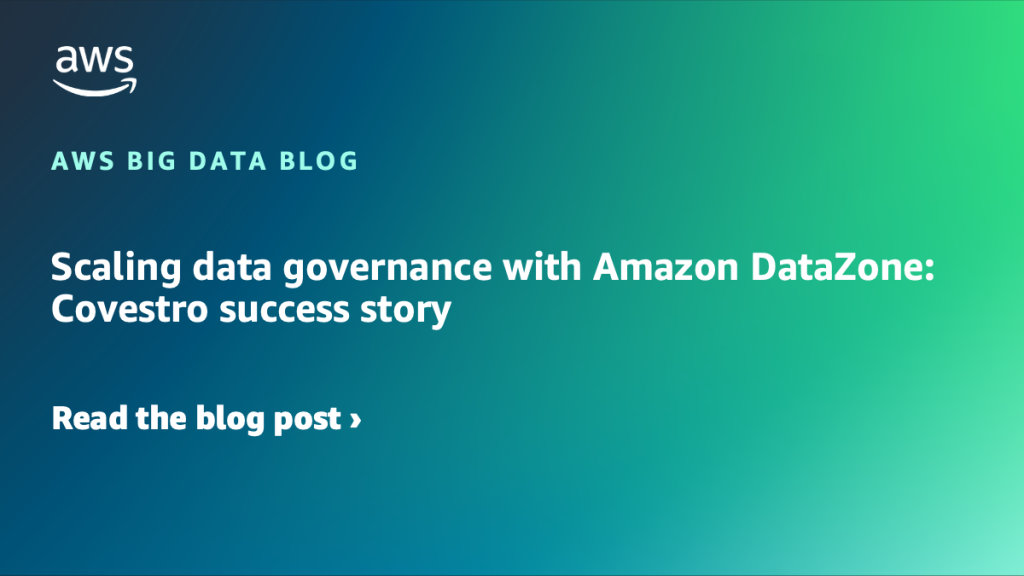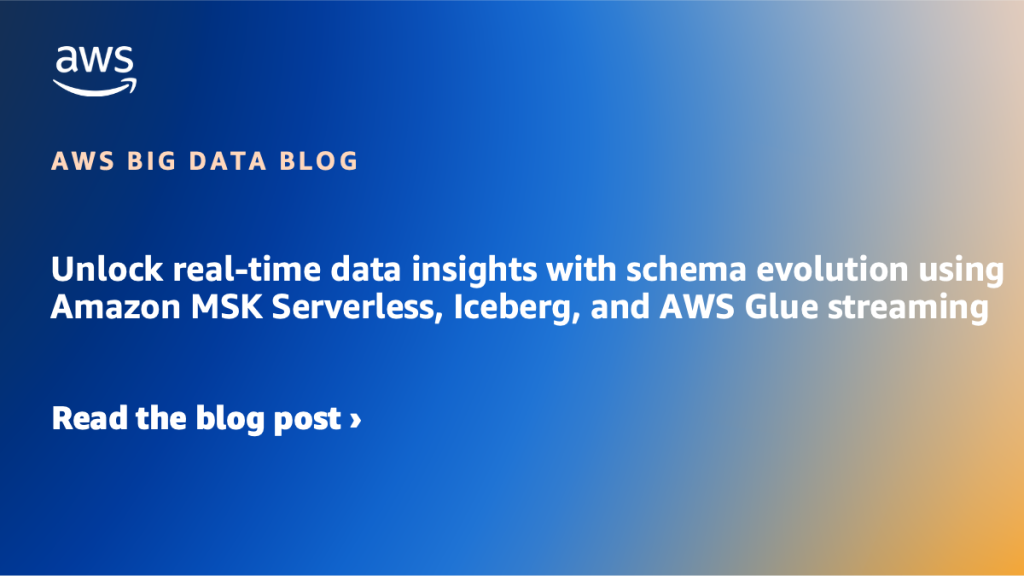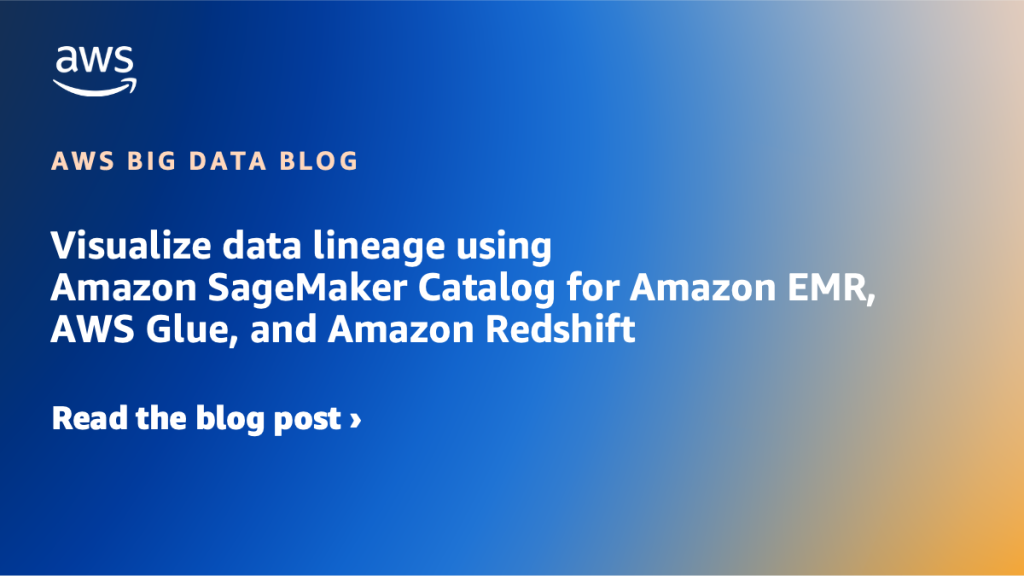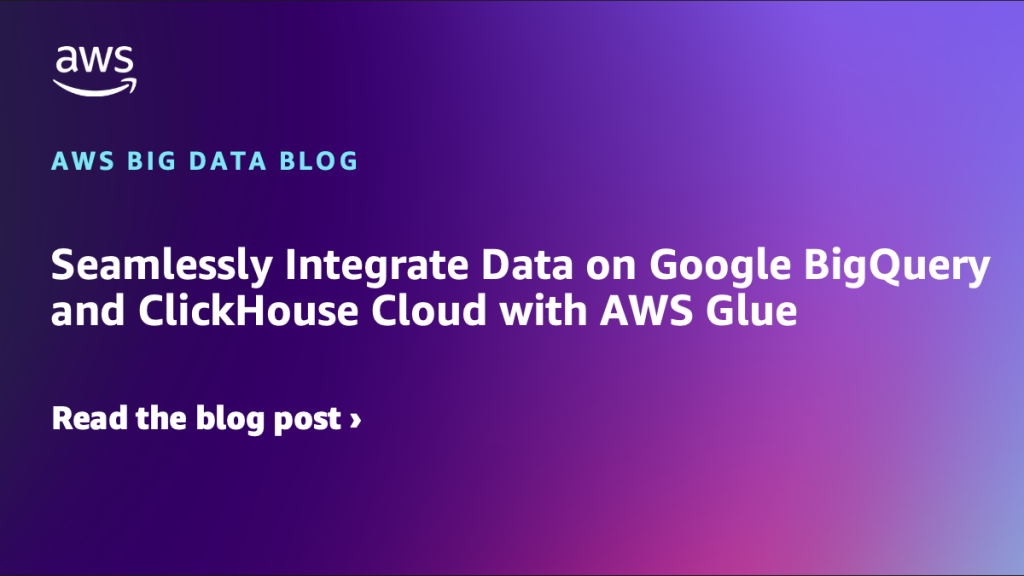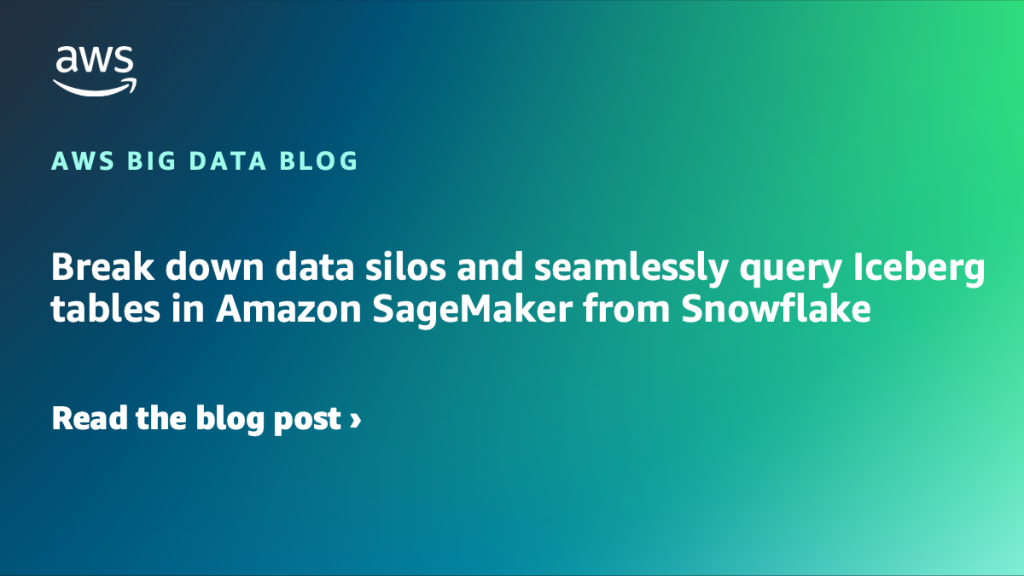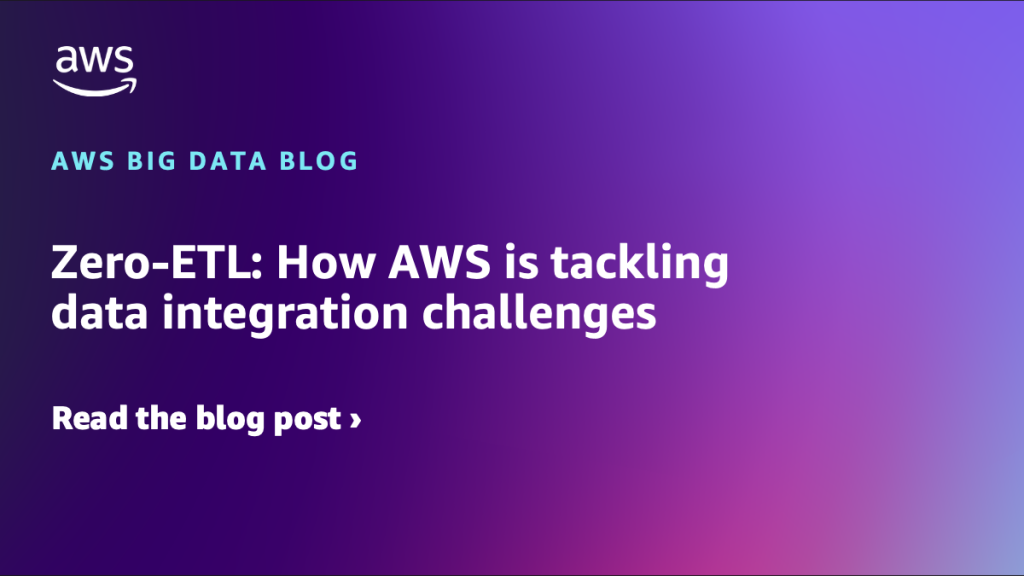AWS Big Data Blog
Category: AWS Glue
Medidata’s journey to a modern lakehouse architecture on AWS
In this post, we show you how Medidata created a unified, scalable, real-time data platform that serves thousands of clinical trials worldwide with AWS services, Apache Iceberg, and a modern lakehouse architecture.
Introducing catalog federation for Apache Iceberg tables in the AWS Glue Data Catalog
AWS Glue now supports catalog federation for remote Iceberg tables in the Data Catalog. With catalog federation, you can query remote Iceberg tables, stored in Amazon S3 and cataloged in remote Iceberg catalogs, using AWS analytics engines and without moving or duplicating tables. In this post, we discuss how to get started with catalog federation for Iceberg tables in the Data Catalog.
Accelerate data lake operations with Apache Iceberg V3 deletion vectors and row lineage
In this post, we walk you through the new capabilities in Iceberg V3, explain how deletion vectors and row lineage address these challenges, explore real-world use cases across industries, and provide practical guidance on implementing Iceberg V3 features across AWS analytics, catalog, and storage services.
Scaling data governance with Amazon DataZone: Covestro success story
In this post, we show you how Covestro transformed its data architecture by implementing Amazon DataZone and AWS Serverless Data Lake Framework, transitioning from a centralized data lake to a data mesh architecture. The implementation enabled streamlined data access, better data quality, and stronger governance at scale, achieving a 70% reduction in time-to-market for over 1,000 data pipelines.
Unlock real-time data insights with schema evolution using Amazon MSK Serverless, Iceberg, and AWS Glue streaming
This post showcases a solution that businesses can use to access real-time data insights without the traditional delays between data creation and analysis. By combining Amazon MSK Serverless, Debezium MySQL connector, AWS Glue streaming, and Apache Iceberg tables, the architecture captures database changes instantly and makes them immediately available for analytics through Amazon Athena. A standout feature is the system’s ability to automatically adapt when database structures change—such as adding new columns—without disrupting operations or requiring manual intervention.
Visualize data lineage using Amazon SageMaker Catalog for Amazon EMR, AWS Glue, and Amazon Redshift
Amazon SageMaker offers a comprehensive hub that integrates data, analytics, and AI capabilities, providing a unified experience for users to access and work with their data. Through Amazon SageMaker Unified Studio, a single and unified environment, you can use a wide range of tools and features to support your data and AI development needs, including […]
Seamlessly Integrate Data on Google BigQuery and ClickHouse Cloud with AWS Glue
Migrating from Google Cloud’s BigQuery to ClickHouse Cloud on AWS allows businesses to leverage the speed and efficiency of ClickHouse for real-time analytics while benefiting from AWS’s scalable and secure environment. This article provides a comprehensive guide to executing a direct data migration using AWS Glue ETL, highlighting the advantages and best practices for a […]
Break down data silos and seamlessly query Iceberg tables in Amazon SageMaker from Snowflake
This blog post discusses how to create a seamless integration between Amazon SageMaker Lakehouse and Snowflake for modern data analytics. It specifically demonstrates how organizations can enable Snowflake to access tables in AWS Glue Data Catalog (stored in S3 buckets) through SageMaker Lakehouse Iceberg REST Catalog, with security managed by AWS Lake Formation. The post provides a detailed technical walkthrough of implementing this integration, including creating IAM roles and policies, configuring Lake Formation access controls, setting up catalog integration in Snowflake, and managing data access permissions. While four different patterns exist for accessing Iceberg tables from Snowflake, the blog focuses on the first pattern using catalog integration with SigV4 authentication and Lake Formation credential vending.
Accelerate AWS Glue zero-ETL data ingestion using Salesforce Bulk API
AWS Glue zero-ETL (extract, transform, and load) now supports Salesforce Bulk API, delivering substantial performance gains compared to Salesforce REST API for large-scale data integration for targets such as Amazon SageMaker lakehouse and Amazon Redshift. In this blog post, we show you how to use zero-ETL powered by AWS Glue with Salesforce Bulk API to accelerate your data integration processes.
Zero-ETL: How AWS is tackling data integration challenges
In this blog post, we show you how Amazon Web Services (AWS) is simplifying data integration with zero-ETL while realizing performance benefits and cost optimizations. As organizations gather data for analytics and AI, they are increasingly finding themselves caught in a complex web of extract, transform, and load (ETL) pipelines—the traditional backbone of data integration. […]
